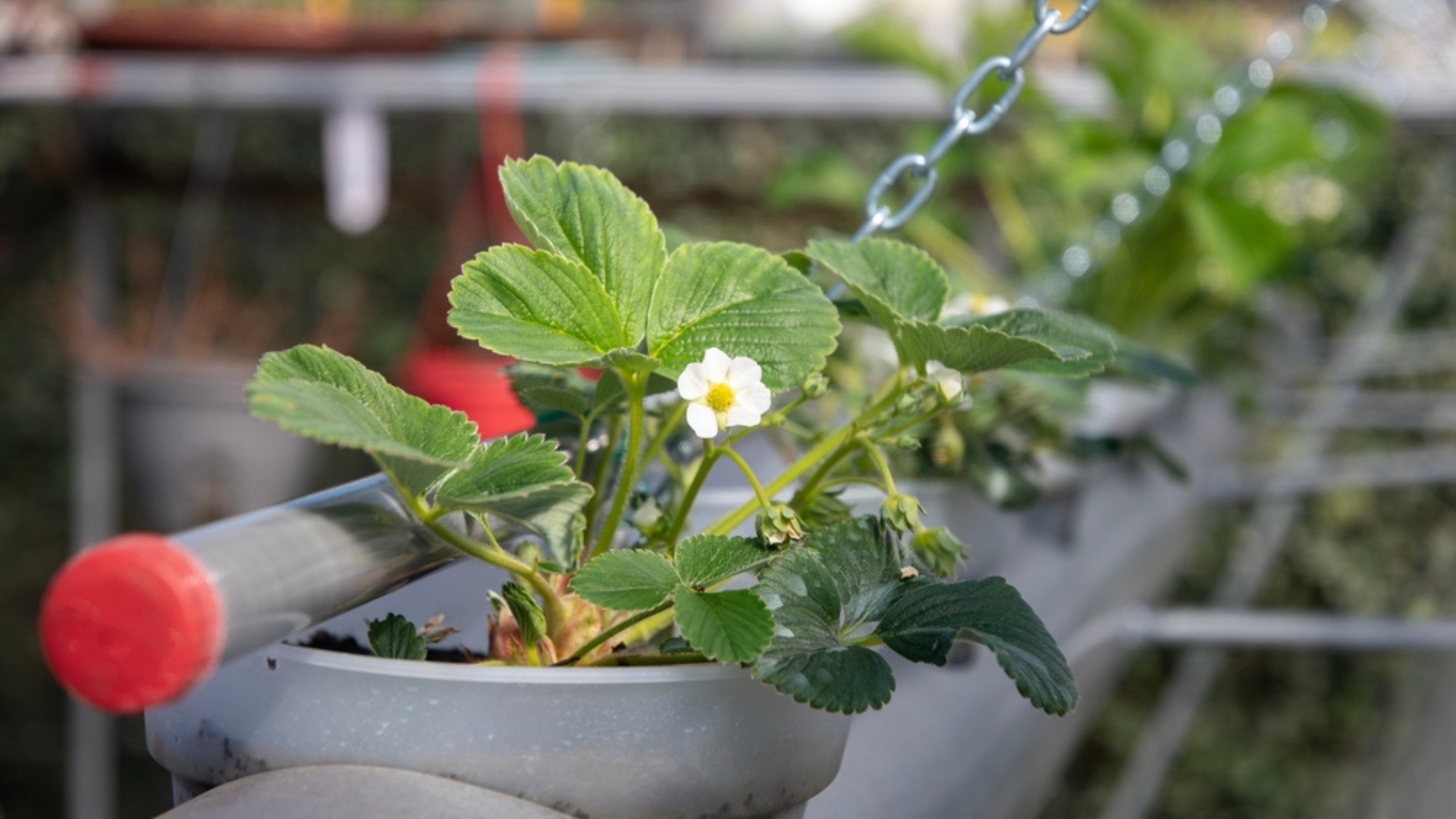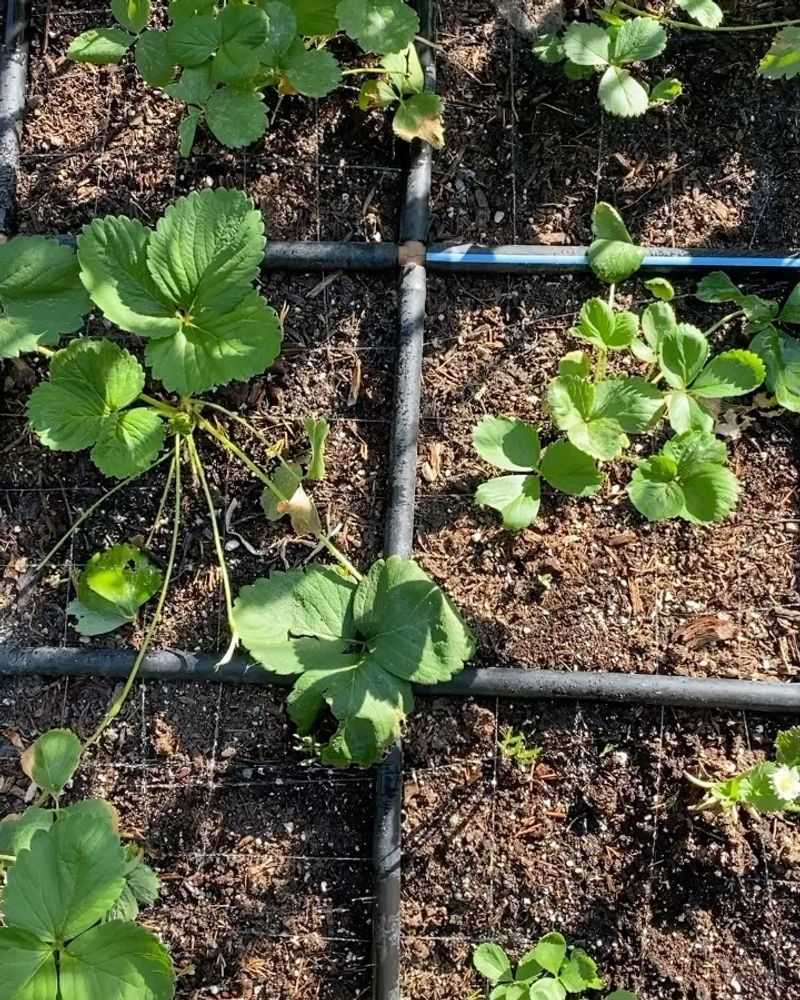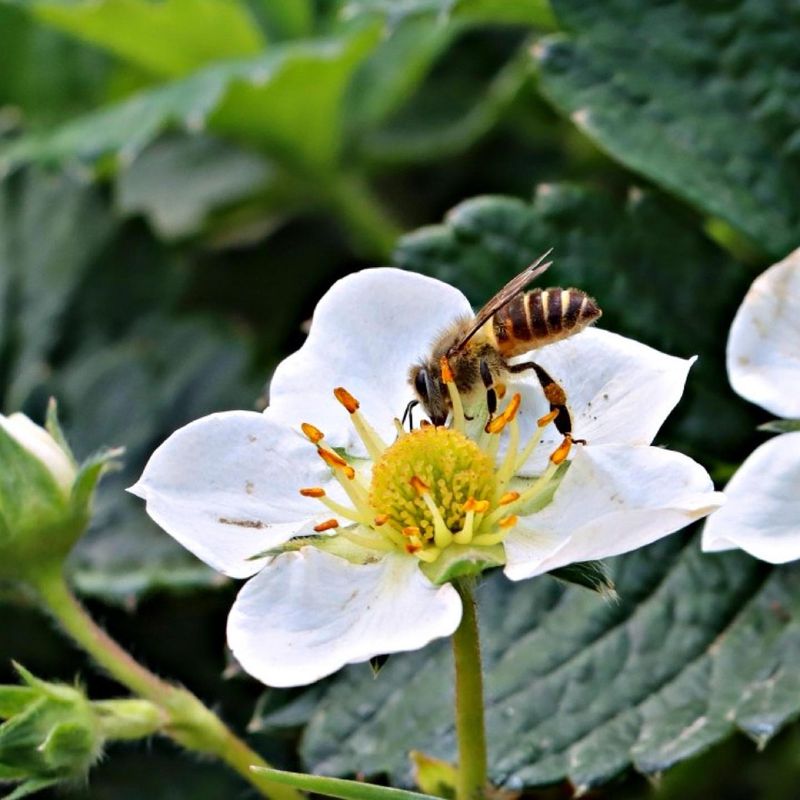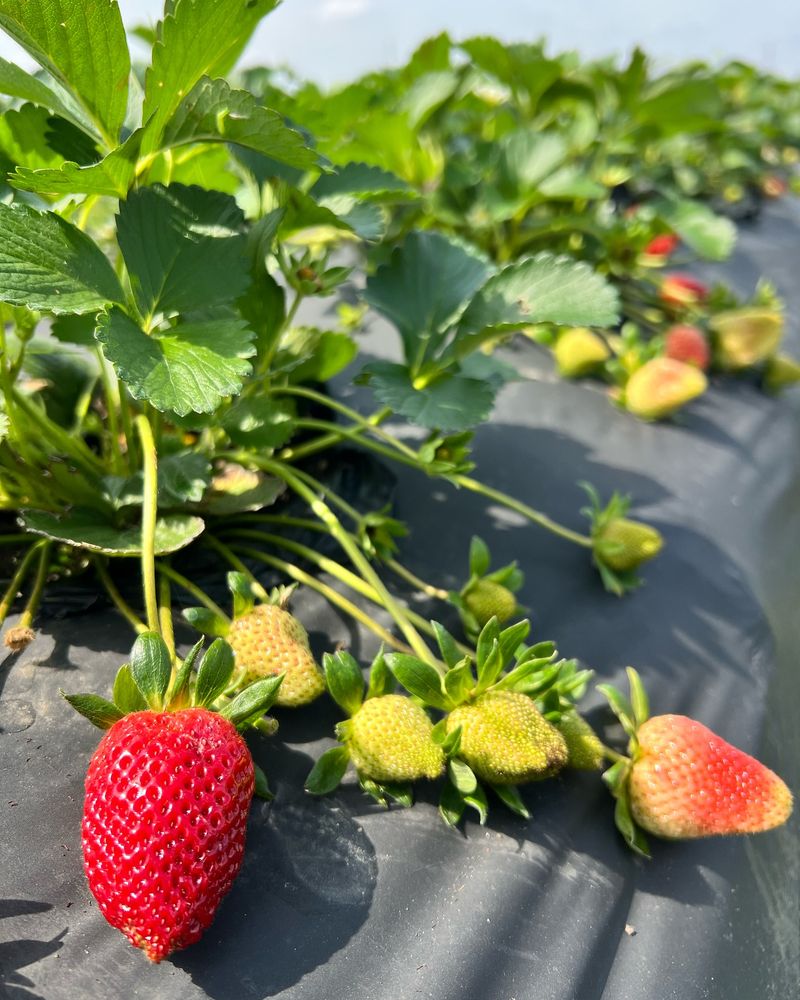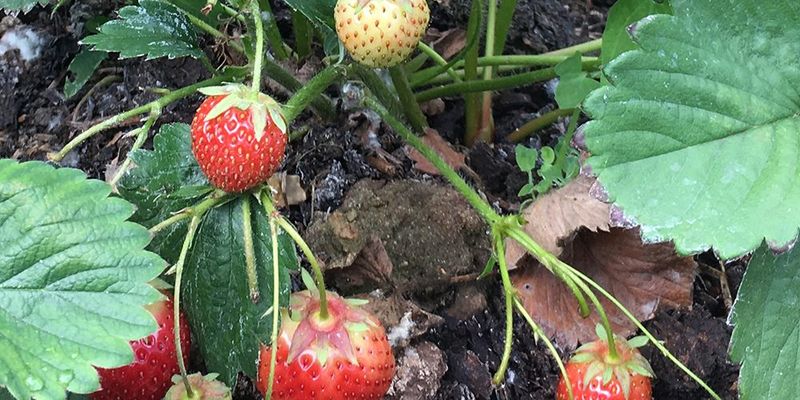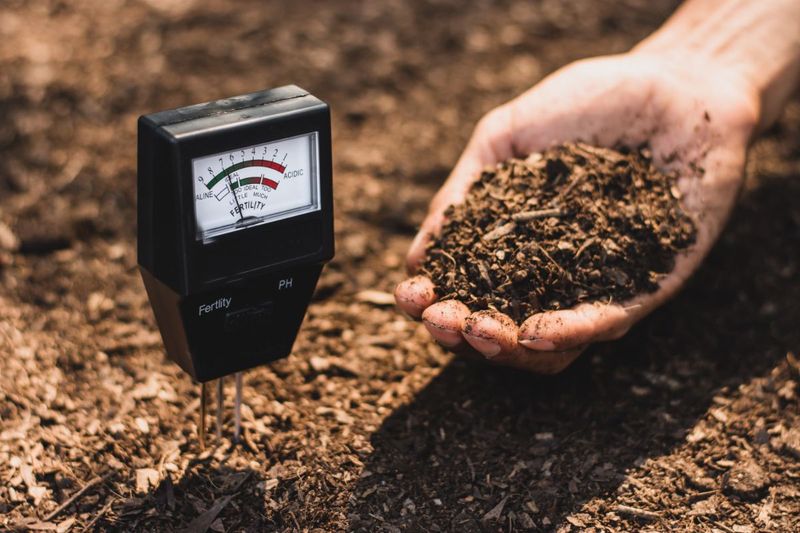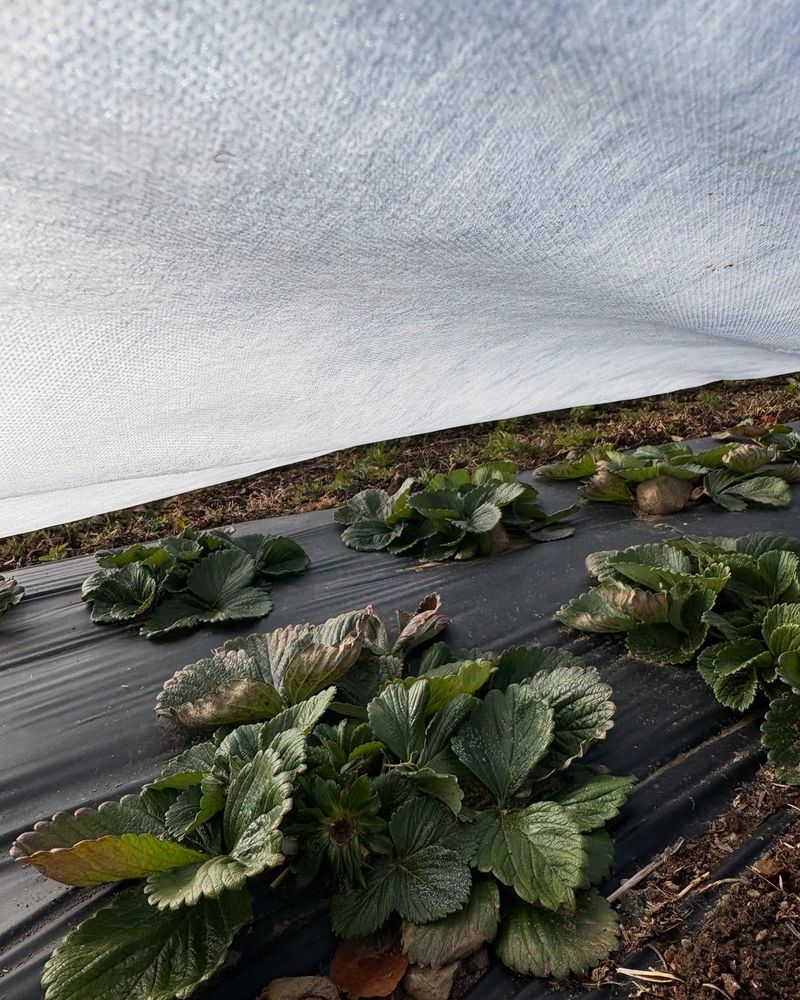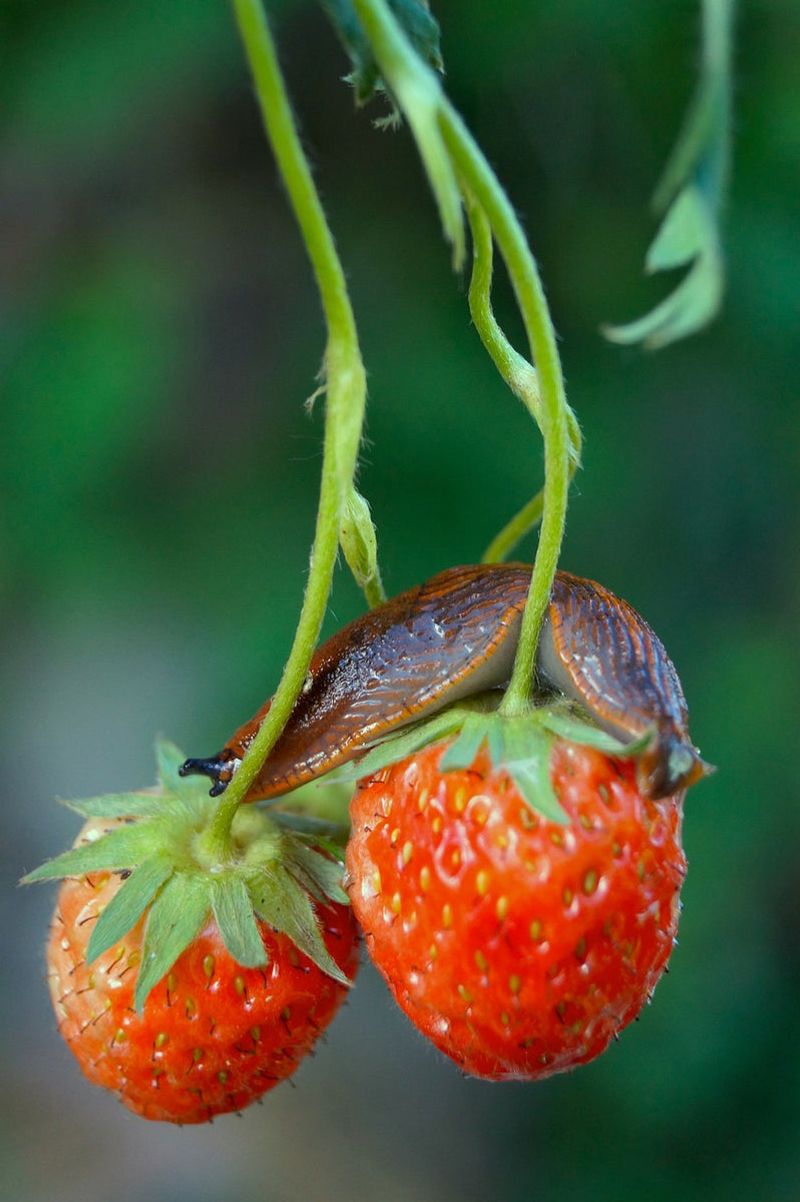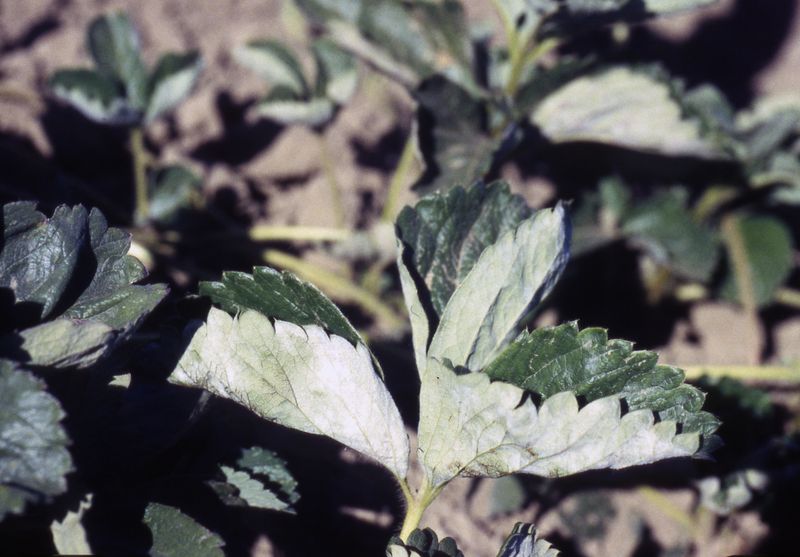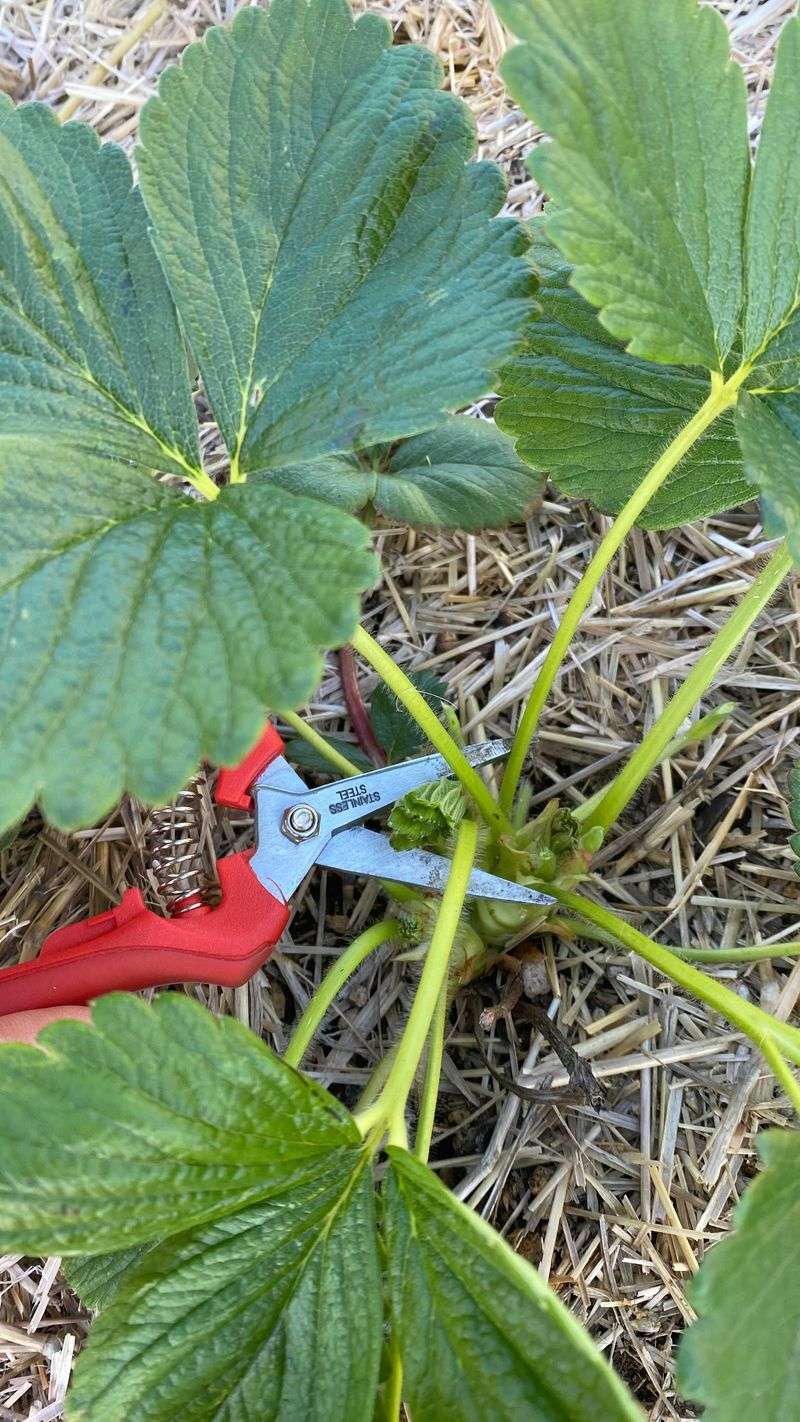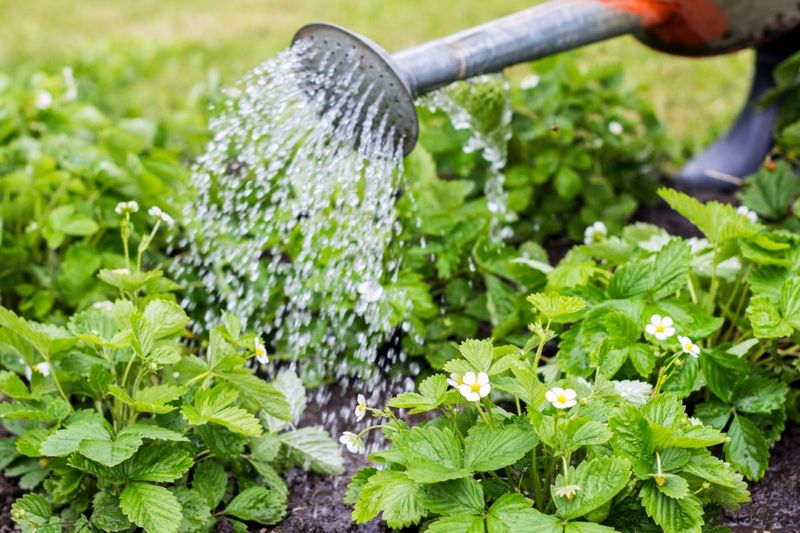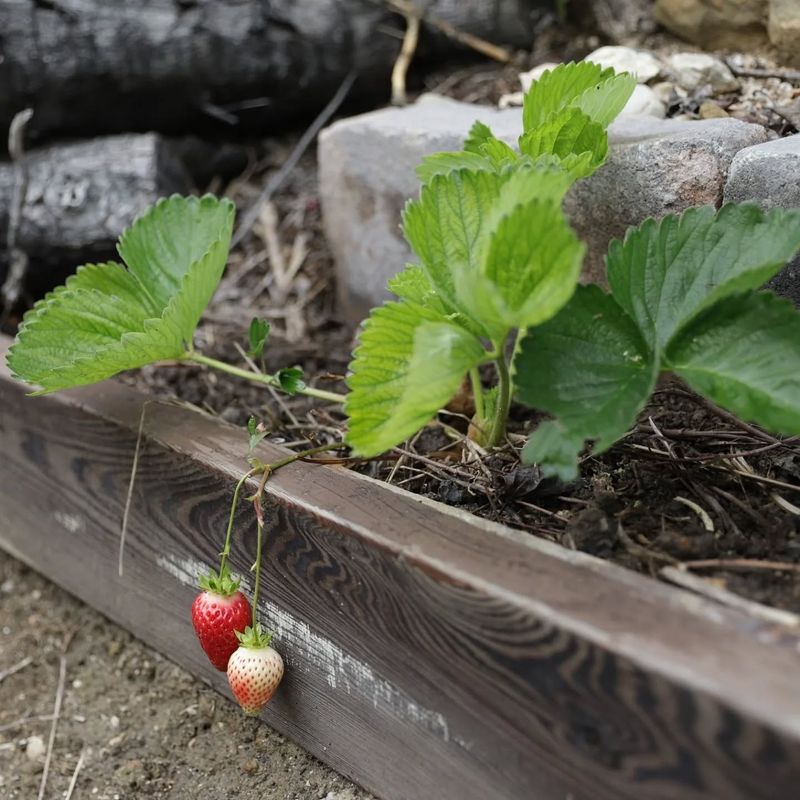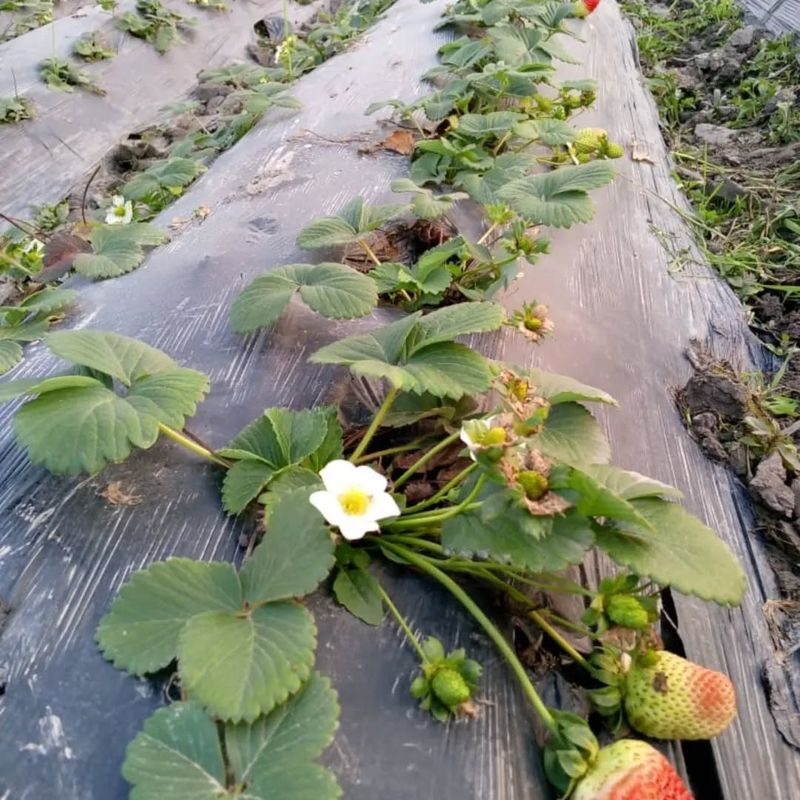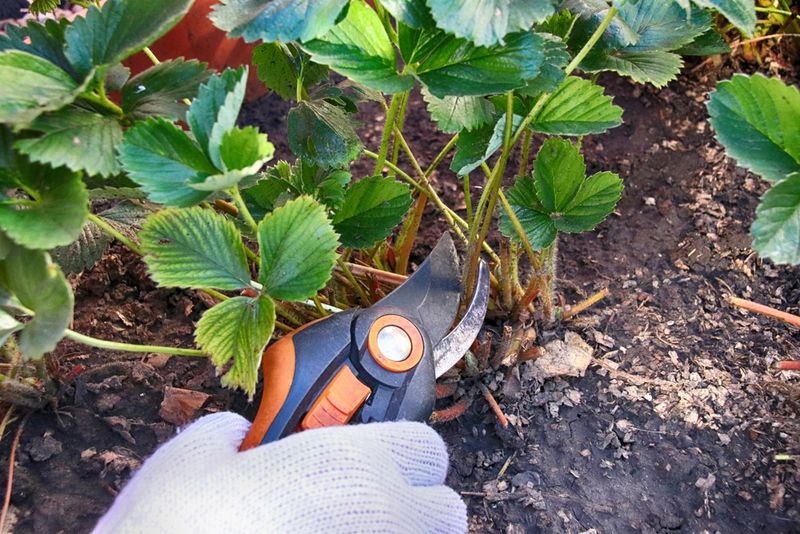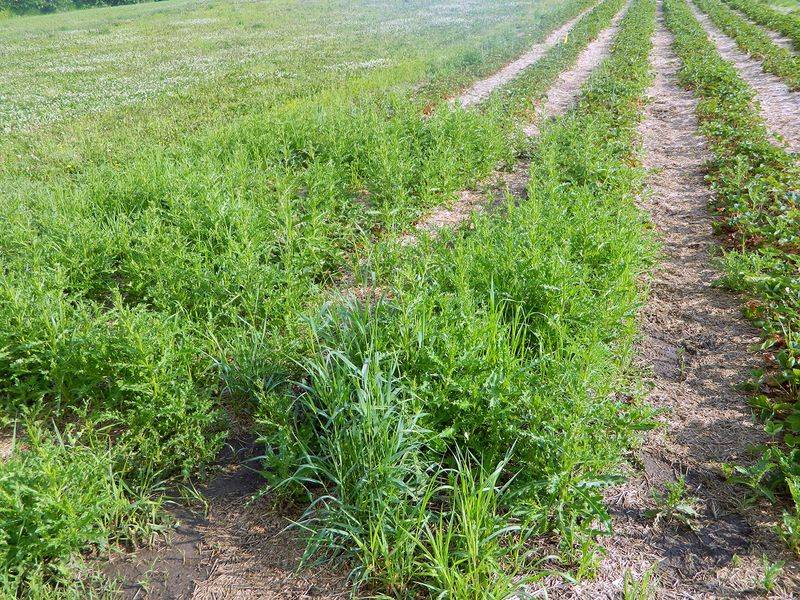Growing juicy strawberries can be rewarding, but sometimes your plants might refuse to produce fruit despite your best efforts. Strawberry plants need specific conditions to thrive and bear those sweet red berries we all love. Understanding what’s holding back your strawberry patch can help you turn things around and enjoy a bountiful harvest.
1. Young Plants Need Time
First-year strawberry plants often focus on developing strong roots rather than making fruit. This is actually healthy! Your plants are building a foundation for future harvests.
For June-bearing varieties, pinch off flowers during the first growing season to encourage better root development. This might seem counterintuitive, but your patience will pay off with a much larger harvest next year.
2. Too Much Nitrogen Fertilizer
Excessive nitrogen promotes lush green growth at the expense of flowers and fruit. Your plants might look healthy with big leaves, but they’re channeling energy into foliage instead of berries.
Switch to a balanced fertilizer with lower nitrogen content once flowering begins. Look for formulations specifically designed for fruiting plants with higher phosphorus and potassium levels to encourage blooming and fruit production.
3. Improper Pollination
Strawberries depend on insects like bees to transfer pollen between flowers. Without proper pollination, you’ll see flowers but no fruit, or misshapen berries.
Attract pollinators by planting bee-friendly flowers nearby. Avoid using insecticides during flowering periods. For indoor or greenhouse plants, you can hand-pollinate using a small paintbrush to gently transfer pollen between flowers.
4. Inadequate Sunlight
Strawberries crave sunshine! Plants receiving less than 6 hours of direct sunlight daily struggle to produce fruit. They need that solar energy to make the sugars necessary for berry development.
Consider relocating your strawberry patch to a sunnier spot. If you’re growing in containers, move them to catch more rays. Pruning nearby trees or shrubs that cast shade can also help your strawberry plants receive the light they need.
5. Poor Soil Drainage
Soggy soil suffocates strawberry roots and invites diseases that prevent fruiting. Healthy strawberry plants need well-draining soil to thrive and produce berries.
Raised beds work wonders for improving drainage. If you’re growing in the ground, mix in plenty of compost and consider adding perlite or coarse sand to heavy clay soils. For container gardens, ensure pots have drainage holes and use a quality potting mix.
6. Incorrect pH Levels
Strawberries prefer slightly acidic soil with a pH between 5.5 and 6.5. When soil is too alkaline or too acidic, plants can’t access the nutrients they need, leading to poor fruit production.
Test your soil with an inexpensive kit from a garden center. To lower pH, add sulfur or peat moss. To raise pH, incorporate garden lime following package directions. Make adjustments gradually over time rather than all at once.
7. Overcrowded Plants
Strawberry plants multiply by sending out runners that take root and form new plants. Without management, your patch becomes overcrowded within a couple of seasons.
Thin plants to maintain 8-12 inches between them. Remove excess runners regularly during the growing season. Every 3-4 years, completely renovate your strawberry bed by removing older plants and keeping only the strongest, youngest ones for better production.
8. Temperature Extremes
Strawberry flowers can be damaged by late spring frosts, preventing fruit formation. Similarly, excessive heat above 85°F during flowering can cause poor pollination and reduced yields.
Cover plants with row covers or old sheets when frost threatens. For heat protection, provide afternoon shade during extreme temperatures. Consider growing day-neutral varieties that can produce in cooler fall conditions if summer heat is a consistent problem in your area.
9. Pest Damage
Sneaky critters like slugs, birds, and insects can destroy flowers before they develop into fruit. You might not even notice the damage until you realize your harvest is disappointingly small.
Diatomaceous earth creates an effective barrier against slugs and snails. Bird netting protects developing berries from feathered thieves. Introducing beneficial insects like ladybugs can help control aphids and other pests naturally without harming pollinators.
10. Disease Issues
Fungal diseases like powdery mildew and leaf spot can weaken plants and reduce fruiting. Viral infections might cause stunted growth and poor production without obvious symptoms.
Start with certified disease-free plants from reputable nurseries. Provide good air circulation by proper spacing. Remove and destroy (don’t compost) any infected leaves or plants immediately. A layer of clean straw mulch keeps berries off soil and reduces disease spread.
11. Aging Strawberry Plants
Strawberry plants naturally decline in productivity after 3-4 years. Those once-prolific plants eventually produce smaller harvests of tinier berries as they age.
Maintain a rotation system where you replace about a third of your plants each year with fresh stock. Mark your oldest plants during harvest season so you’ll know which ones to remove later. Keep the vibrant daughter plants that form from runners to rejuvenate your patch.
12. Insufficient Watering
Strawberries have shallow root systems that dry out quickly. Water stress during flowering and fruiting stages can cause flowers to drop or berries to shrivel before ripening.
Provide consistent moisture, about 1-1.5 inches of water weekly. Drip irrigation works best to keep foliage dry while delivering water directly to roots. A 2-inch layer of organic mulch helps retain soil moisture and reduces watering frequency.
13. Wrong Variety for Your Climate
Not all strawberry varieties thrive in every climate. June-bearing types might fail in regions with unpredictable spring weather, while day-neutral varieties struggle in extreme heat.
Research varieties that perform well specifically in your growing zone. Local extension offices or garden centers can recommend proven performers for your area. Consider growing multiple types to extend your harvest season and hedge against weather challenges.
14. Nutrient Deficiencies
Beyond nitrogen, strawberries need adequate phosphorus, potassium, and micronutrients like boron and iron. Deficiencies often show up as discolored leaves and poor flowering.
Apply a balanced organic fertilizer formulated for berries in early spring. Compost tea makes an excellent supplement during the growing season. Foliar sprays with seaweed extract can quickly address micronutrient deficiencies when leaves show symptoms like yellowing between veins.
15. Improper Pruning
Failing to remove old leaves and runners can reduce air circulation and redirect energy away from fruit production. A tangled, overgrown plant struggles to produce quality berries.
Prune after harvest, removing older leaves and limiting each plant to 2-3 runners. For ever-bearing types, perform light pruning throughout the season to remove dead leaves. Always use clean, sharp tools to prevent spreading disease between plants.
16. Weed Competition
Weeds compete fiercely with strawberries for water, nutrients, and sunlight. They can quickly overrun a strawberry patch, reducing the plants’ ability to flower and fruit properly.
Apply a thick mulch layer of straw, pine needles, or black plastic to suppress weeds. Pull any weeds that do emerge promptly, being careful not to disturb strawberry roots. Avoid deep cultivation around plants, as strawberry roots are shallow and easily damaged.

